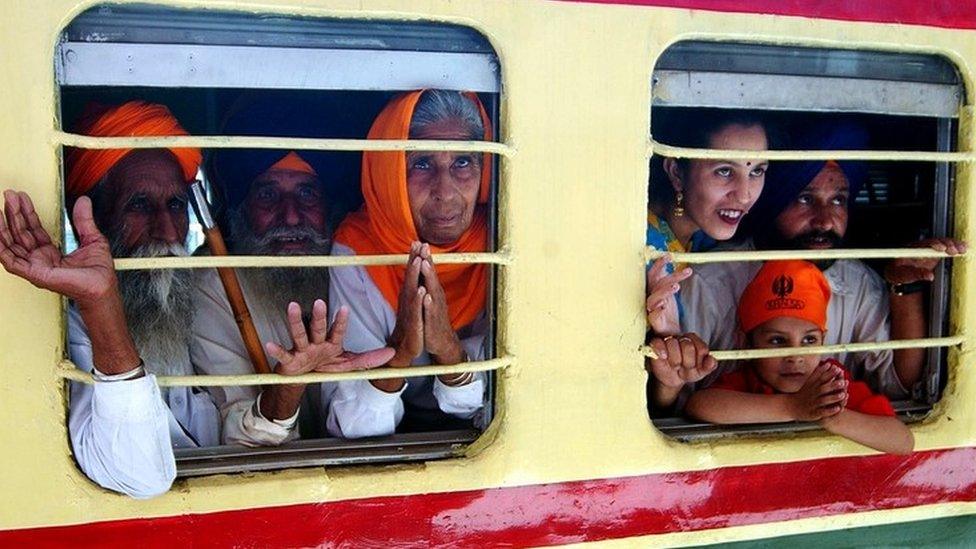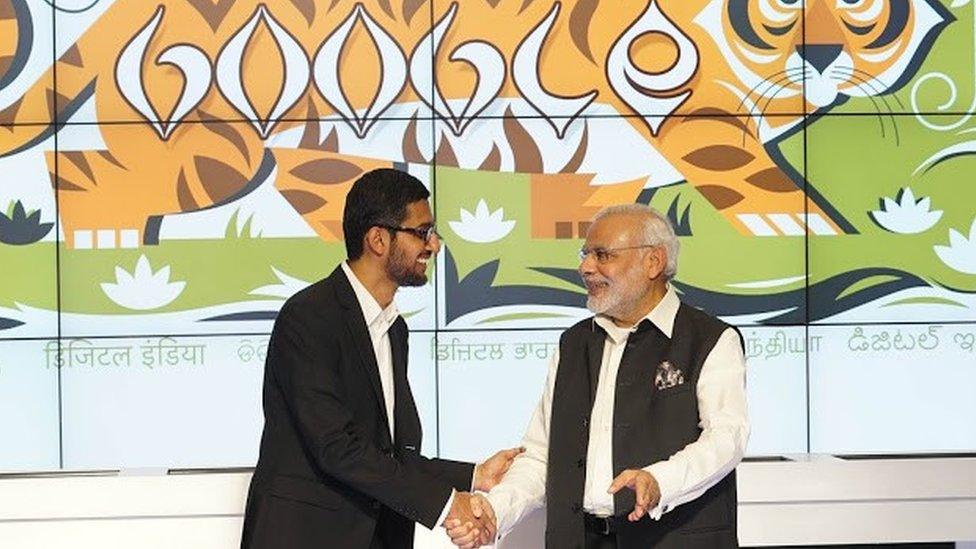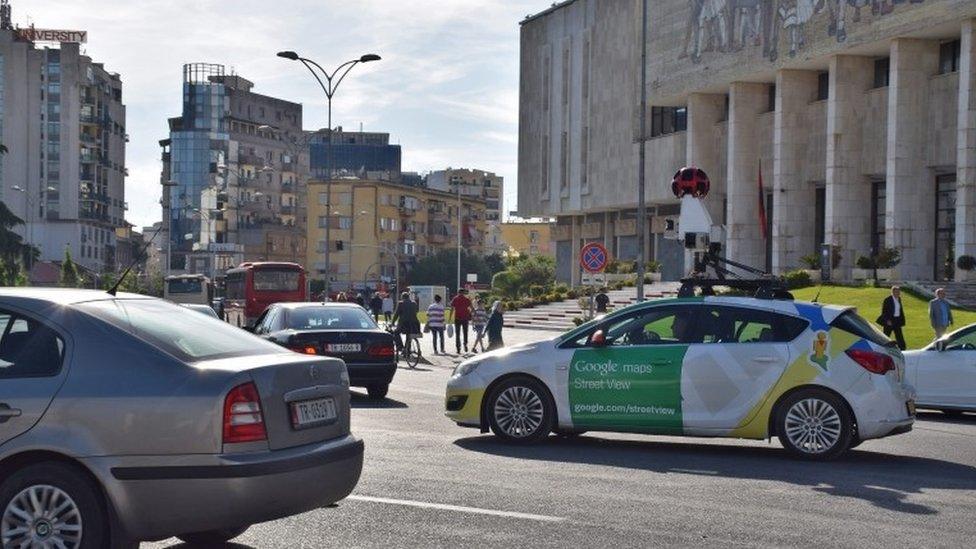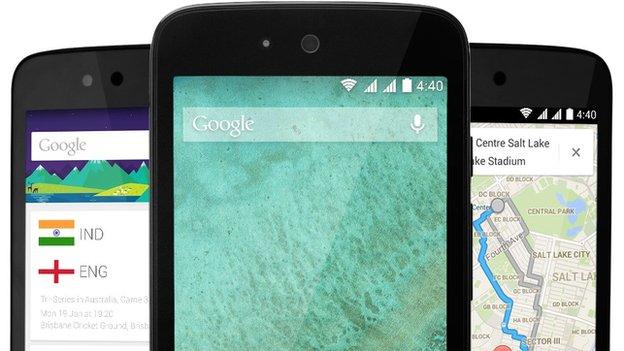Google pushes into India with free wi-fi
- Published

Millions of Indians travel by train every day
Google is to roll out a comprehensive public wi-fi platform in India, as part of its bid to get more people using its services.
Dubbed Google Station, the service will see wi-fi hotspots rolled out in stations, with plans to expand this to shopping malls and cafes at some point.
Google already offers high-speed free wi-fi access at 52 railway stations across India.
This would increase to 100 by the end of the year, it said.

Indian Prime Minister Narendra Modi visited Google headquarters and met chief executive Sundar Pichai
Writing on the official Google blog, , externalchief executive Sundar Pichai said the project "would rank as the largest public wi-fi project in India, and among the largest in the world, by number of potential users".
"Even with just the first 100 stations online, this project will make wi-fi available for the more than 10 million people who pass through every day," he wrote.
The service will be free to start with, but Google will be looking to monetise it at some point.
As well as aiming to cover 400 stations eventually, it will also look to add more partners to expand to shopping malls, cafes and other places with high footfall.
Ceasar Sengupta, vice-president of Google's Next Billion Users division, which is targeting emerging markets, said: "Every second, three Indians come online. And we have to ensure that the experience is wonderful for them.
"But the next billion is very different from the first billion, and by building products for these users we are preparing for how the world will use tech in the coming years,"
India represents huge opportunities for the big tech firms - some 350 million Indians are online currently, and this is expected to grow to more than 600 million in the next three years.
In 2014, Google launched Android One in the country, a handset with a minimum set of features that sells for about $100 (£77).
More recently, the company revealed a feature that made mobile web pages load faster and with less data and made YouTube available offline, with an offline version of Maps coming soon.
It has also worked to build greater local language support into its products, including Hindi Voice Search, an improved Hindi keyboard and support for seven other Indian languages with the latest version of Android.
It has also begun an initiative aimed at helping women benefit from the internet.
Google Station would also be launched in Indonesia and the Philippines in future, the company said.
- Published10 June 2016

- Published15 September 2014
